People when they hear that I have worked and lived for two years in the Seychelles Islands are always asking what it was like from a gardening perspective to live somewhere so exotic …. well it was a tropical paradise , a real Garden of Eden experience where the main view was just greenery everywhere on an all year round basis and something I wouldn’t have missed for the world .
My house was set high up in the middle of a rain forest built on a rocky clearance looking out over the Indian Ocean and in the garden there were no seasons and the plants flowered every six weeks throughout the year .
The Seychelles is a group of 110 islands in the Indian Ocean and I lived and worked in Victoria on Mahe Island , the main administrative centre and largest island .
The driveway was lined with coconut trees , papaya and banana trees and the bird of paradise plants close to the house were thirty feet high … an average temperature of 30 deg. with no real monsoon seasons although January and February had usually more rain , lovely lovely people , a creole culture , no snakes , no poisonous spiders , no crocodiles but lizards everywhere and you learned to live with them in every room all the time , exotic birds , fruit bats and huge land turtles on some of the islands but the overall major effect was exhuberant lush green in your face vegetation and where coconuts sprouting a new tree within weeks wherever they fell .
Coconut trees are marvellously exotic but hugely dangerous to stand close to them in case a coconut fell and there were fatalities every year in the Seychelles with people being hit by falling coconuts . It was a particular hazard when parking the car close to the trees and once when driving out the front gate I thought the roof would come in when one fell on the car … paradise has its pit falls !
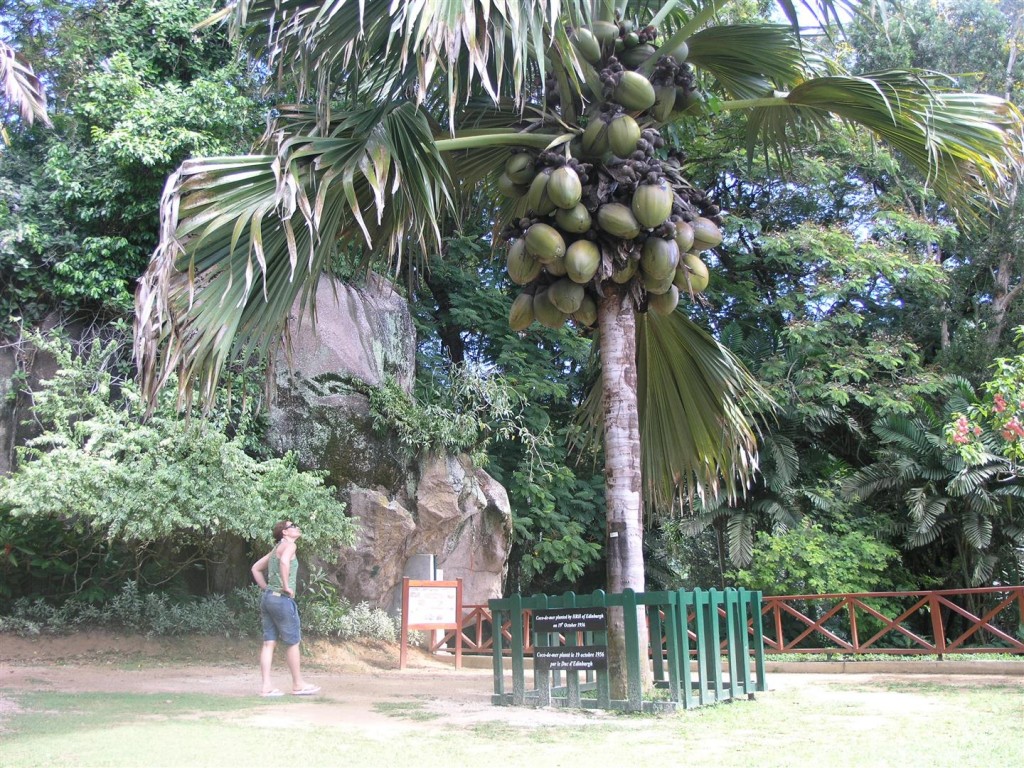
Snezana being careful under a Coco de Mer tree , Botanic Gardens , Mahe Island , Seychelles , December 2006
The Coco de Mer tree , grows only in the Seychelles, mainly on Praslin Island and nowhere else in the world …. can be up to 800 years old , grows to be over 30 metres tall and can have up to 400 kg. of coconuts hanging from it . It is the national symbol of the Seychelles , a protected species and you need an export permit to take home one of the coconuts … an awesome sight when you see them all together as a huge group of trees .
The legend in Seychelles according to the tourist brochures is that the Coco de Mer fruit resembles a certain part of the female anatomy … no I am not making this up ….. think recent images of Kim Khardasian’s ass !
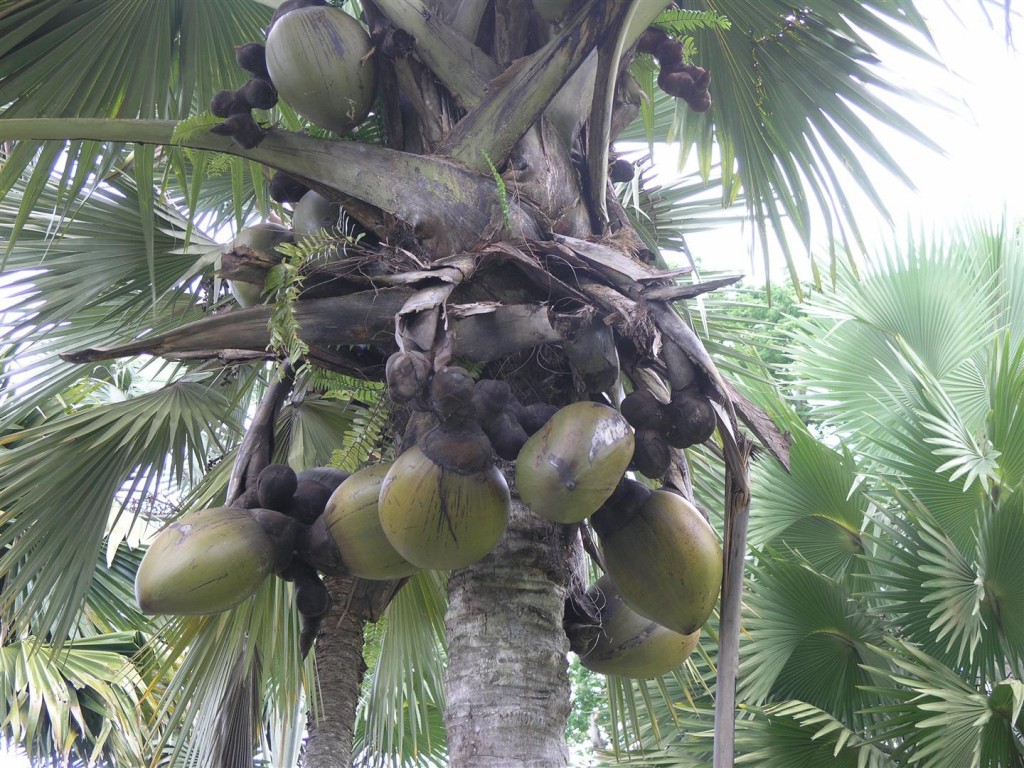
Falling from 30 metres , you don’t want to be under one of these bad boys ! Seychelles December 2006
It gets dark in the Seychelles within seconds at 6 pm as if you turned a light switch and sun rise is equally instant and dramatic at 6 am , spectacular electric storms and as most roofs are tin you think the whole house will come crashing down when the thunder starts and the whole Seychelles experience is so unique you would need several books to describe just what it is like to live there full time .
I took this photo one evening while walking on Beau Vallon Beach , Mahe Island , no fancy lens involved , just a simple point and shoot camera . I was only living on Mahe for three months at this stage and thought the sun set was spectacular however after two years there I had come to regard this type of view as normal such is the extraordinary beauty of the Seychelles islands .
I took this photo at Anse Source d’Argent beach on La Digue Island , Seychelles … this beach has been voted one of the top ten beaches in the world by Conde Nast Travel Magazine .. impossible to take a bad photograph here with the wow factor of the huge granite rocks as a back drop .
Fruit bats are bats but not as we know them ….as big as squirrels with the wing span of a heron , shy gentle creatures , they fly every evening just before sunset but not as low as bats do here and seldom come down to even roof level and you rarely get to see one close up except through a long telephoto lens like in these photos here taken close to the house as they hung upside down in a tall papaya tree .
The tree that made the most impact on me was the breadfruit tree which grew three to four storeys high and had these football size fruits which could be cooked and which is the only food that fruit bats eat but the one plant I would have liked to bring home with me was the bird of paradise which grew outside to almost ten metres tall … even though the flowers were about the same size as you see grown indoors here but the foliage of the ones growing outdoors in Seychelles was incredible .
The first time I landed at Mahe Airport the plane came in low across the jungle and all you see is blue sea and sky and when we landed the passenger announcement was that the outside temperature was 30 deg and as I moved towards the door I thought after fourteen years living in the Balkans I can handle that .
But as I stood at the door way of the plane out on the gangway the humidity rolled over me and in seconds it was like I had been in a sauna for over an hour with my clothes on …and that’s how it was for the next two years , huge humidity which I never acclimatised to …… yes I was living in a tropical paradise 7 deg below the equator but I could never walk too far in it !
These land turtles can live to be 130 years old and are gentle animals not at all bothered by human contact and of course now are a protected species and the Seychellois people are enormously proud of them .
Back to our Irish November weather today when I spent the day planting out wall flowers which are a particular good buy at the moment in Glenconnor with 25 bare rooted wall flowers for five euros which I planted out in wet sticky clay with the rain coming down in buckets … difficult to imagine those same plants in bloom next spring but worth the effort today as you can’t beat the old cottage garden combination of wall flowers , tulips and daffodils all in bloom together . Generally my newly planted wall flowers get eaten to the ground in the lower field by the rabbits but come back in a year’s time much stronger for their initial “ pruning ” and interestingly the rabbits leave them alone then .
One last photo from the Seychelles which I couldn’t resist while looking out on a bleak wet and windy November day in Ireland !
I often read references to certain gardens being “ dated ” and certainly in my time in gardening I have seen the like of heather gardens , which were all the rage in the 70’s with entire banks of borders planted up with all the colours of the rainbow interspersed with a few upright conifirs or silver birch , now go totally out of fashion ….a pity as heathers particularly the winter and spring flowering varieties have great merit but in a case of throwing the baby out with the bathwater it seems all heathers are now deemed a no no .
The latest targets of the gardens revisionistas seem to be the tall grasses planting schemes made famous by Piet Oudolf over the past fifteen years in gardens throughout the world and the “ experts ” through their gardening articles and books are now turning against grasses ….. for me the location of the grass planting scheme is all important i.e. in a wild garden or used throughout a mixed border but NOT in car parks or in front of shopping centres as then it can get a bit tired looking .
I have in mind in particular the car park and entrance to the Avoca Shop on the Naas Road in to Dublin and I remember the first few times I saw the mass planting of miscanthus grass it was wow this is great but you know last week I saw it again and thought this is getting a bit samey , even boring … I came back later that evening to the garden here and thought the grasses looked great because it is a natural setting , not a commercial or industrial setting .
But of course no garden stands still nor should it remain stuck in a time warp and we all adopt new planting schemes and get tired of certain features or lay outs and recently when talking to Helen Dillon ( shameless name dropping here !) she said that she had changed her entire front garden in 2005 as she felt it had got a bit twee and 1960’s looking and she fancied shaking things up a bit and inspired by a visit to the iconic modernist Fletcher Steele garden in Massachusetts , swept all the cottage garden look away and replanted with fifty one silver birch trees .
Fine so far you might say but last week reading Penelope Hobhouse’s book ” On Gardening ” written in 1994 and when discussing planting schemes for the approach to a garden she specifically mentions Helen Dillon’s front garden and described it as “Helen Dillon’s front garden in Dublin for example – a magical place , hardly separated from a tree lined – lined street – is full of delightful planting ” . A celebrated garden designer such as Ms. Hobhouse calls it delightful and yet eleven years later Helen Dillon dismantles it .
I was reminded today of how nice it is to have a container with aromatic plants close to either the front or back door so that you get the nice smell as you pass … today I brushed up against a container at the front door and got the strong smell of lavender and was immediately reminded of summer … and I didn’t even plant this lavender here as it self seeded and I didn’t have the heart to transplant it elsewhere even though it looks out of place in a pot where it has now grown to overshadow the main plant which is a large box ball and most summer days I run my hands through the lavender as I go past it which is what I mean by having plants like this close to where you pass regularly .
Lavender can be tricky to grow successfully as it won’t tolerate wet conditions so anything water logged is out as the plant will die after a season or two , secondly it needs the sun and does not like rich conditions as in it’s Mediterranean home it grows best on rough pebbly ground and the old adage “ treat them mean keep ‘em keen ” certainly applies with lavender . The mistake a lot of people make with lavender is to plant it into peaty good positions and the other no no is to feed it .
Finally bad pruning will kill lavender as it cannot be cut back into old wood as the plant will not grow again from old wood … I prune lavender three times in the year , a light tidying up after flowering in July , in September a second light cut and then in April a fairly hard cut …. this type of pruning will maintain lavender in a nice rounded compact shape as otherwise if left unpruned it grows into a straggly mess with all the growth on top … but always the cut is just above new growth . I prefer the old English varieties like hidcote augustofolia as it grows into a nice compact ball if trimmed right and I am not a fan of the French variety stoechas as it is fairly short lived although this is the variety that has self seeded into my front door pot and is obviously thriving !
This is the period when I tidy up the gunnera for winter as over the past few weeks the huge leaves have flopped onto the ground and twisting the leaves back over the crown will also provide cover when the frost hits hard towards the end of November …. this will also provide nice shelter for hedgehogs and other small animals . It is a glorious sight in early March when the new growth of the gunnera pushes through what is left of the old leaves and begins to unfurl and for me it is this rather the early daffodils that signify the start of the new season
People buy their first gunnera , which is a huge plant not to everybody’s taste and which needs a large garden and expect instant results but in my experience of growing gunnera for over thirty years , gunneras take a few years to settle in after planting and contrary to people’s perceptions does not need water around it … it likes water to be near so it can dip it’s toes in water but will not tolerate planting in water logged ground and prefers to be on dry ground but to extend it’s roots a metre or so away into water .
But if you do have the space then in my view there is very little to touch a gunnera in all its glory as it adds a touch of Jurassic Park to the wild garden !
Some colour in the Winter Garden
Today I planted up three new pots with plants to take the front garden through the dark winter months and as these are large pots they took quite a lot of filling and for that reason I keep a few of what chefs call stock pots continually on the go where throughout the year all the sweepings up of sand and earth from rain pipes and the driveway are stored together with fallen leaves from last year and these make up the first quarter of each pot which I then topped up with John Innes compost . About eight inches below the surface I planted fifteen daffodil bulbs …. Jetfire a miniature variety …. these will remain in the pot all year and because they are planted so deep they won’t interfere with the bedding annuals and perennials I intend to use these pots for in the summer season.
I finished off with a mixture of pansies and cowslips which should provide flowers all winter and in February / March the daffs will come through and be in flower until end of March … in late April early May I will transfer the cowslips to the garden , discard the pansies and plant up with summer flowering annuals , a mixture of cosmos , blue lobelia and white alyssum … so these pots will be in production for almost the entire year .
You might ask why no tulips in the pots and it is because tulips get exhausted in pots and rarely come back the following season… the tulip foliage after flowering takes forever to die back , looks awful in the process and it is a pain to dig them up and replant every year and in my experience if you want pots of tulips then devote pots exclusively for tulips which means you have nothing showing in the pot from September to March … not a good return but good luck if that is your choice .
Just when I thought I had finished buying pots for the year I went to the Kilkenny Car Boot Sale last Sunday to support the Clonmel Lions Club who were operating a stall there and saw this old tin bath for sale ….. people of a certain age had more than a passing acquaintance with one of these as for many working class in Ireland and the UK it was in one of these that the weekly bath in front of the kitchen fire took place . Personally we were posher working class and had a council house but my mother used one of these for washing clothes before we rose to an electric washing machines in the 1960’s so this tin bath most likely has had an interesting history and as a reward will end it’s days with a second life as a garden pot in the Petrovska Garden for Spring and Summer flowers !
I planted it with a carex perennial grass to add a bit of height and structure and followed with an initial deep planting of thirty miniature daffodils var. Jetfire , three pink hyacinths , some crocus and some minature iris reticulata along the front and then a final planting of primroses and sweet william for a Spring display .
In the finished planting you see a lot of empty spaces but come February / March these will be a riot of colour pushing up through the primroses .
Finally grass , to cut or not to cut at this time of year … there are no hard and fast rules here and the only time I wouldn’t recommend cutting grass in winter is after heavy frost as that will not help the grass and certainly it keeps the lawn looking good until March if you can get a few cuts in up to mid December … my problem here is that the ground gets very wet so after early November it just cuts up the ground and my last cut is about mid November if I am lucky .


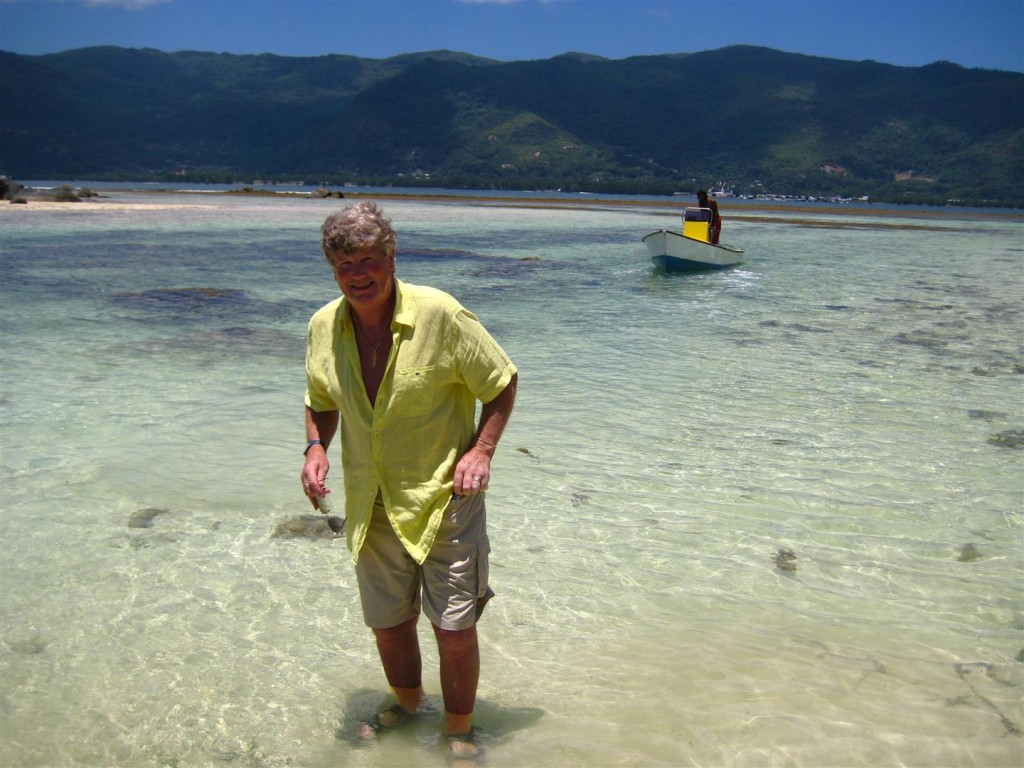
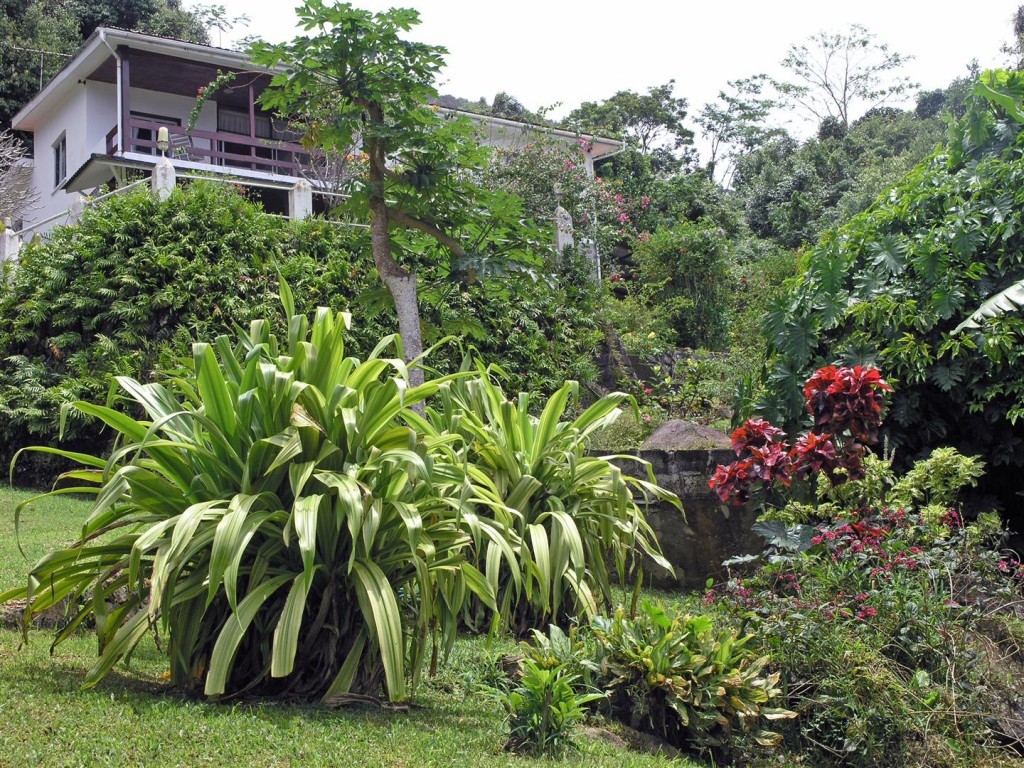

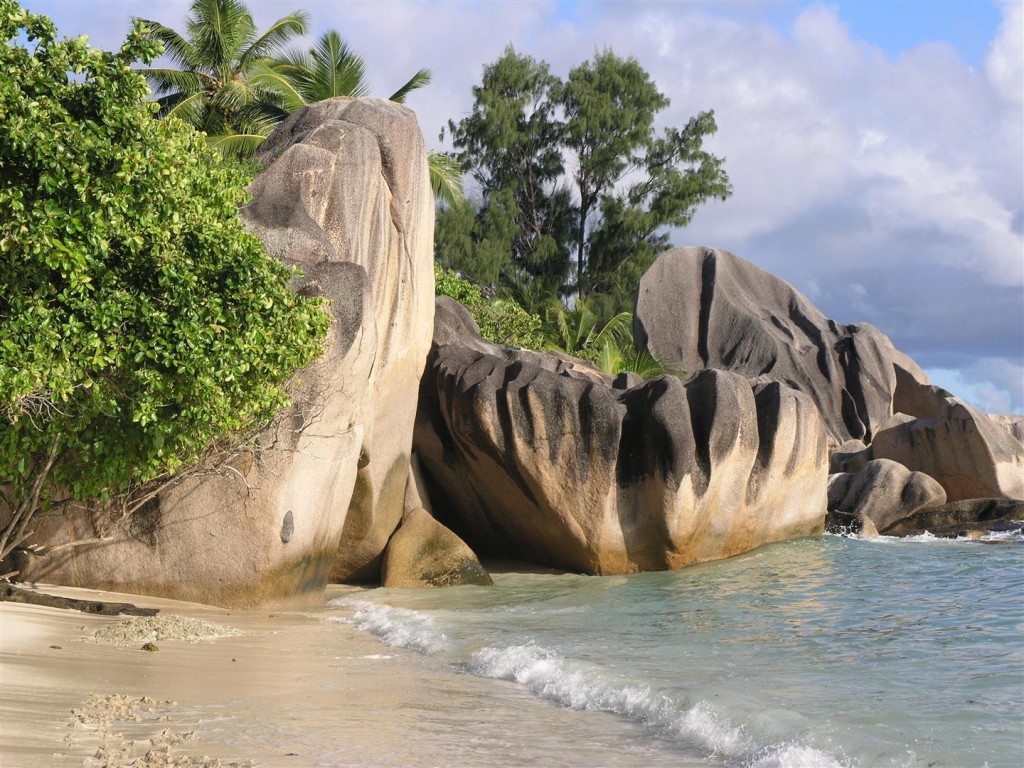

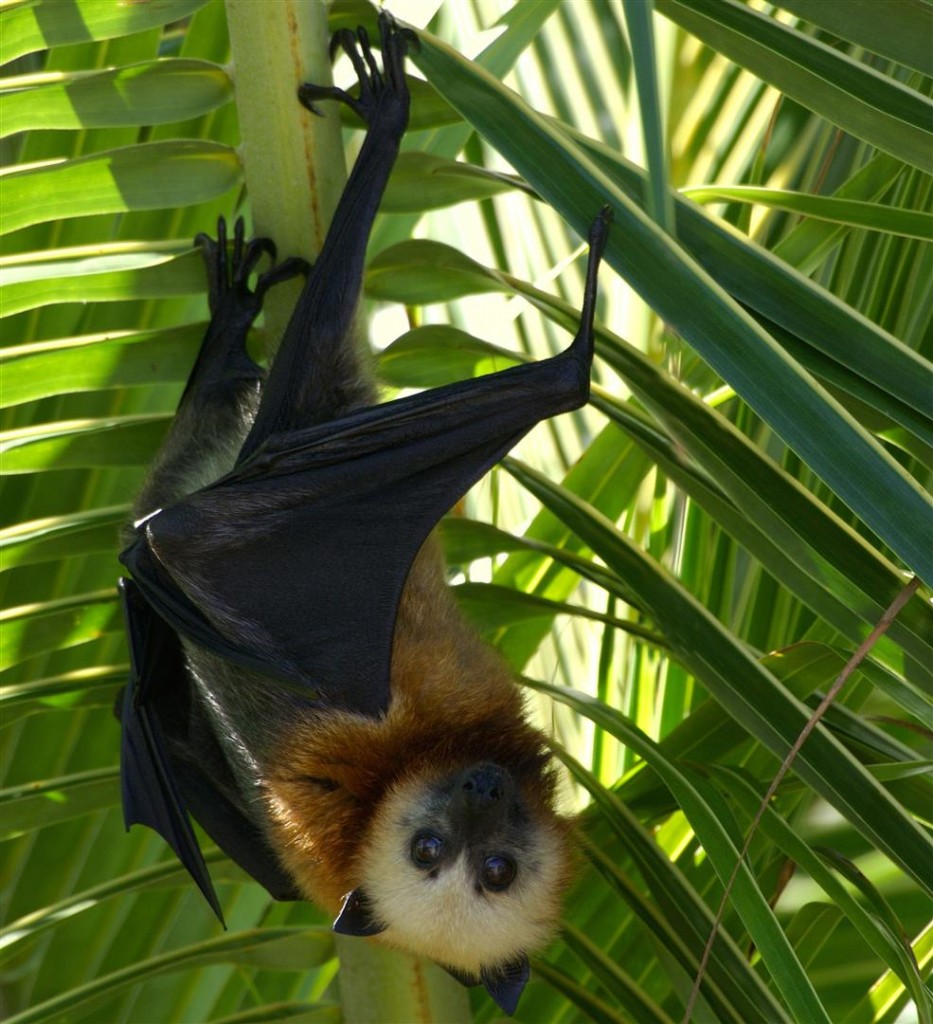
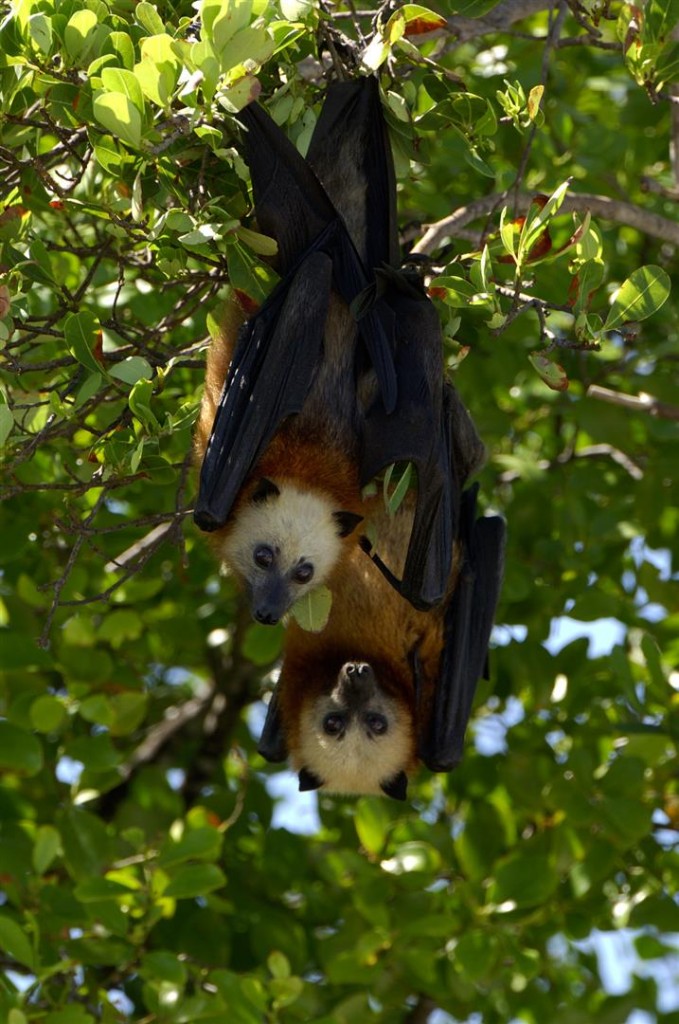
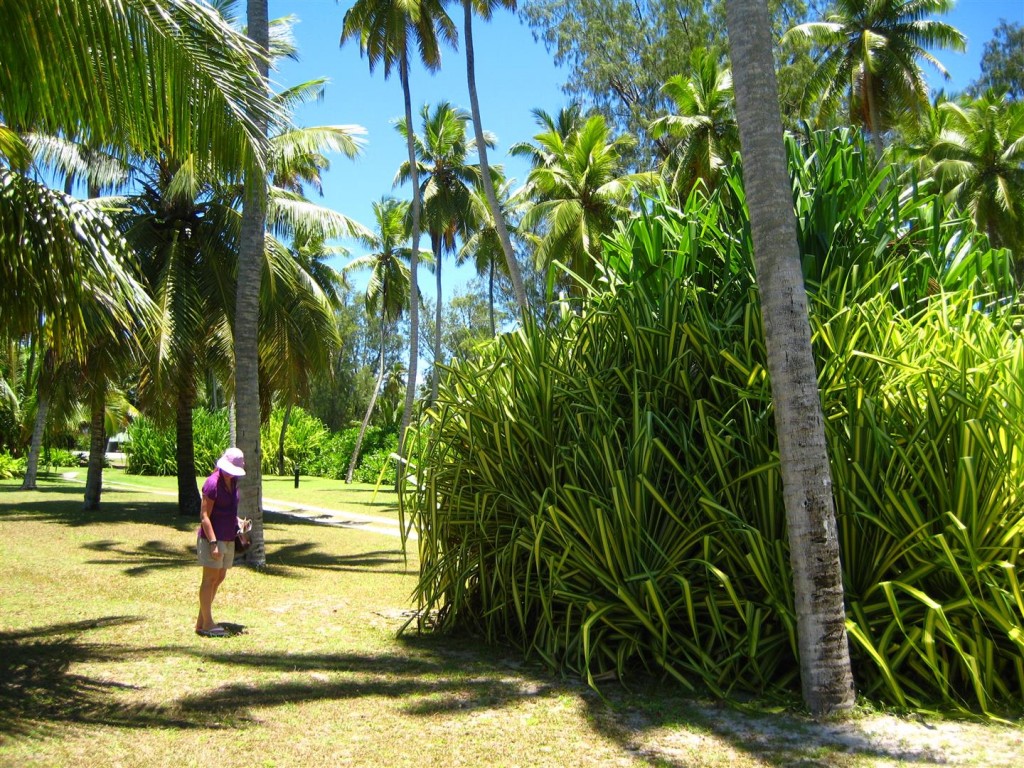

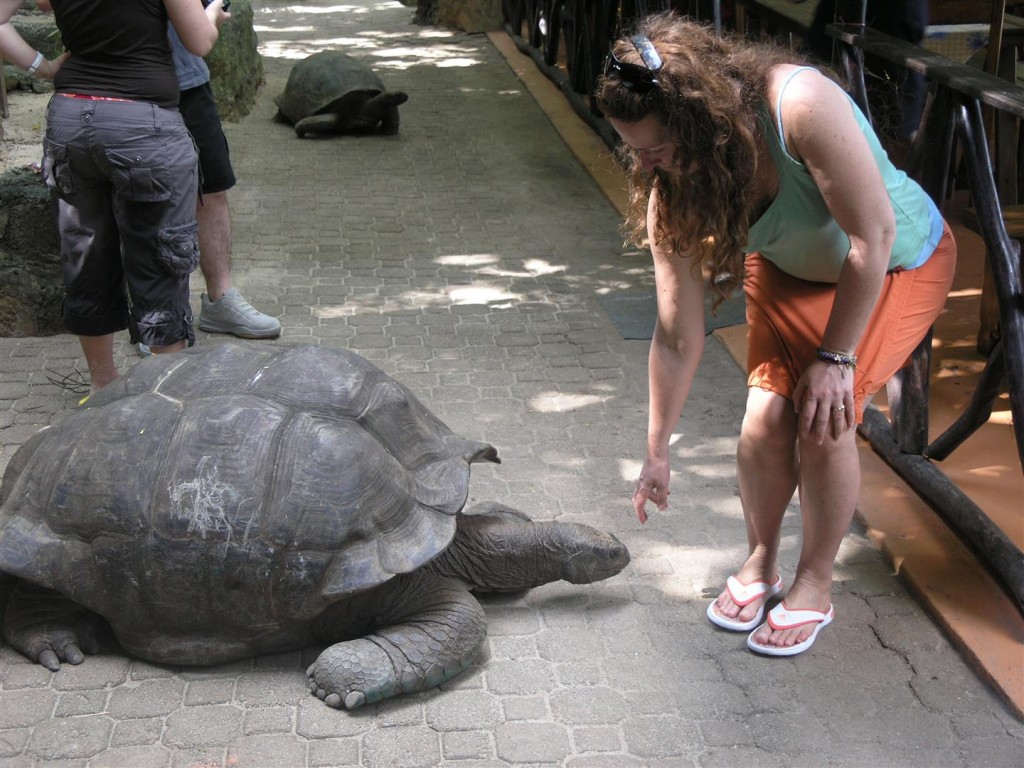
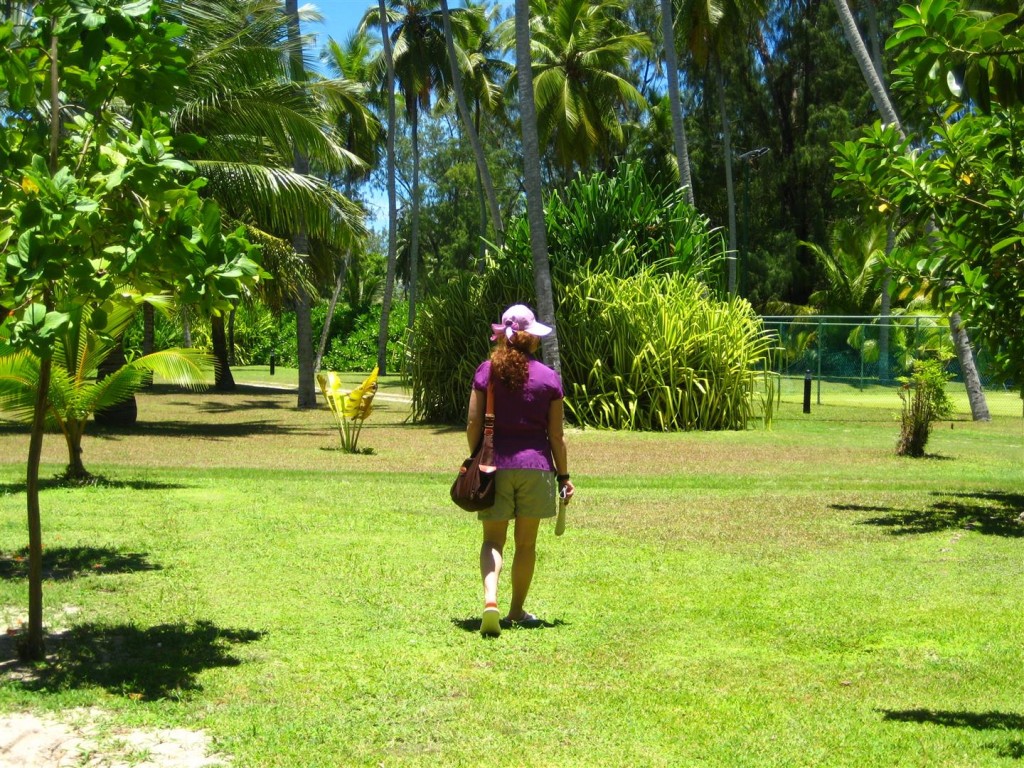
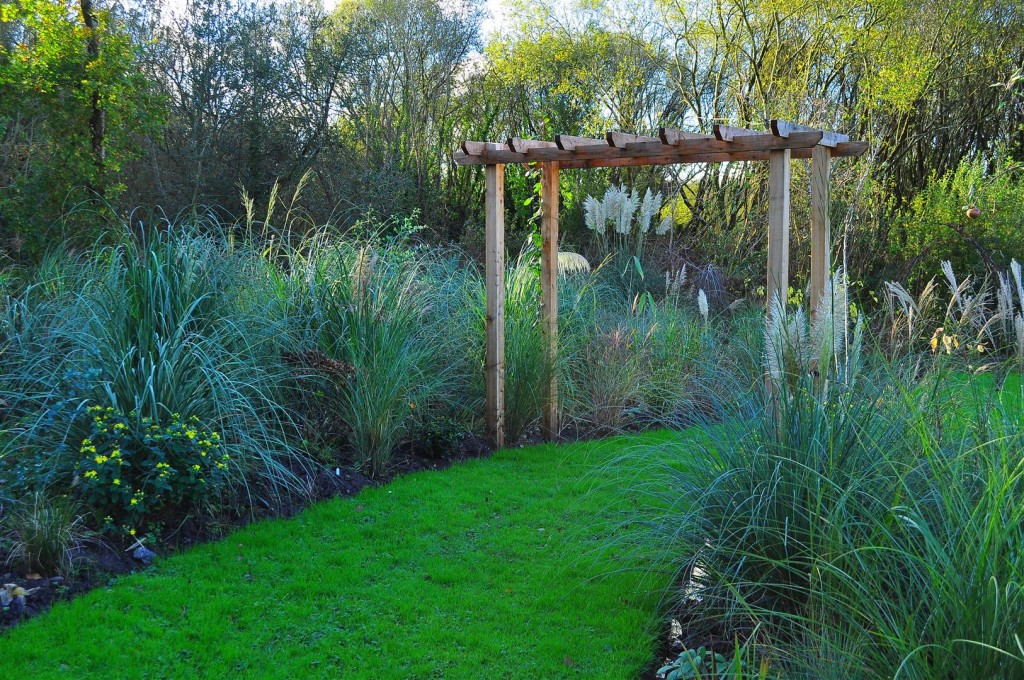
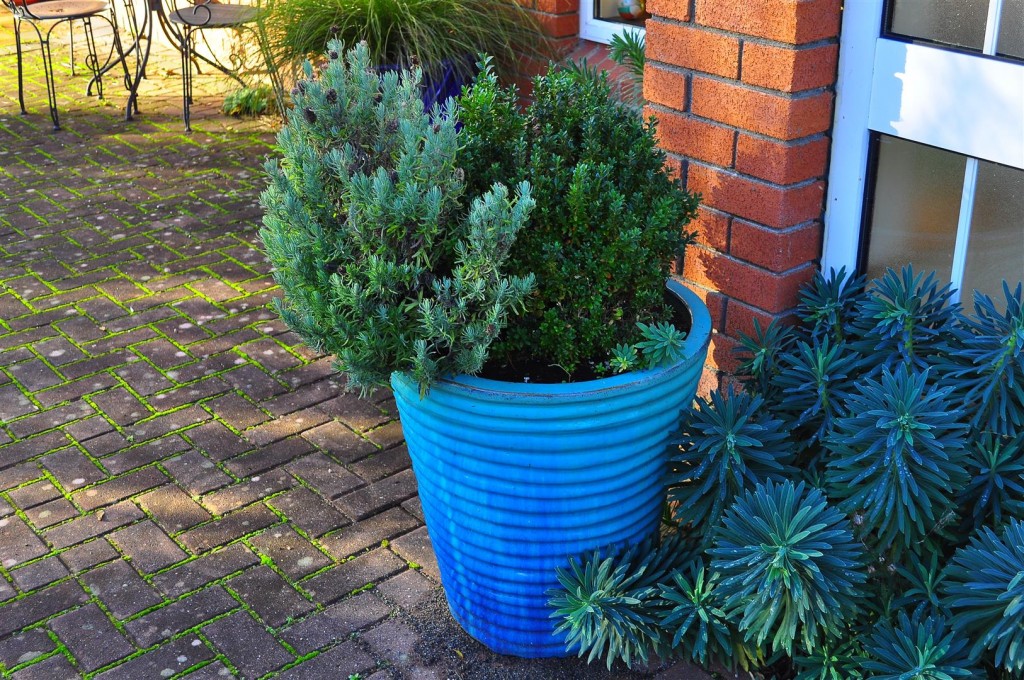
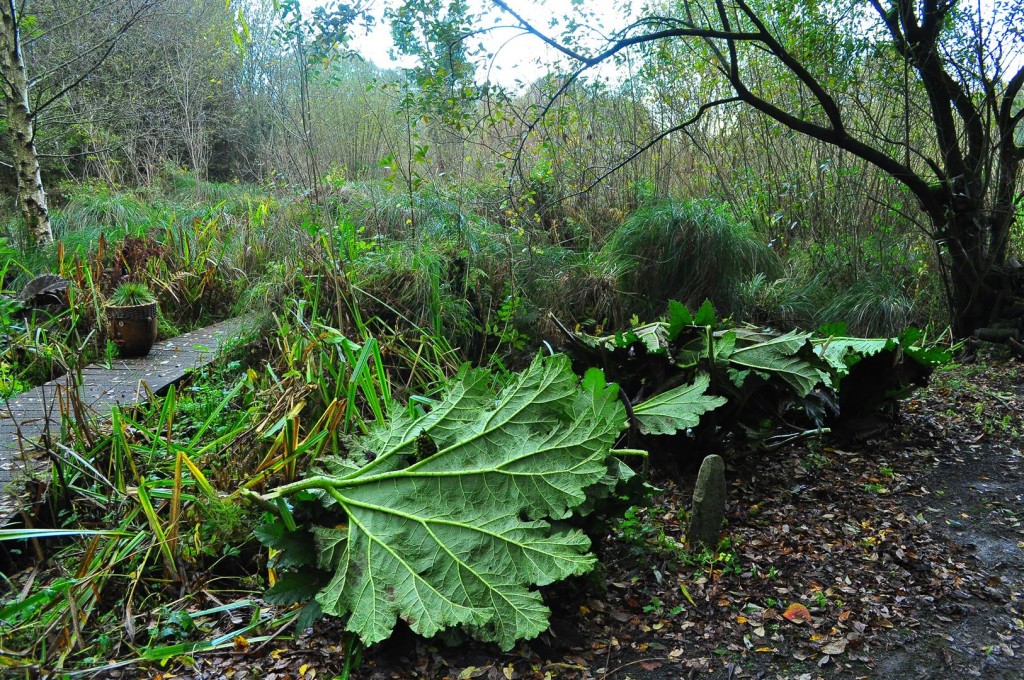
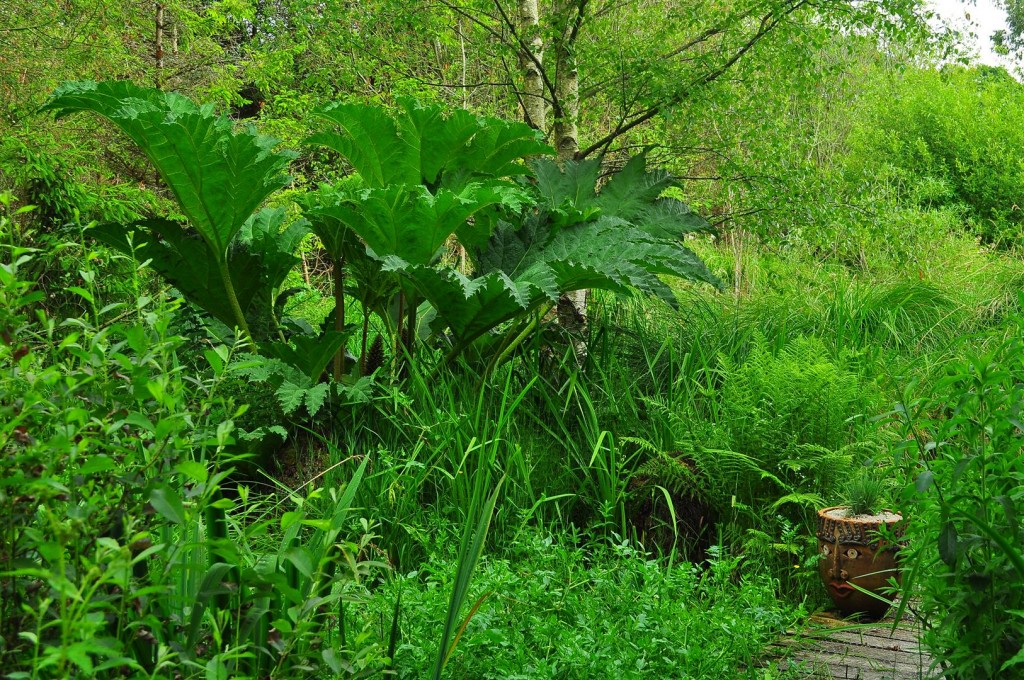
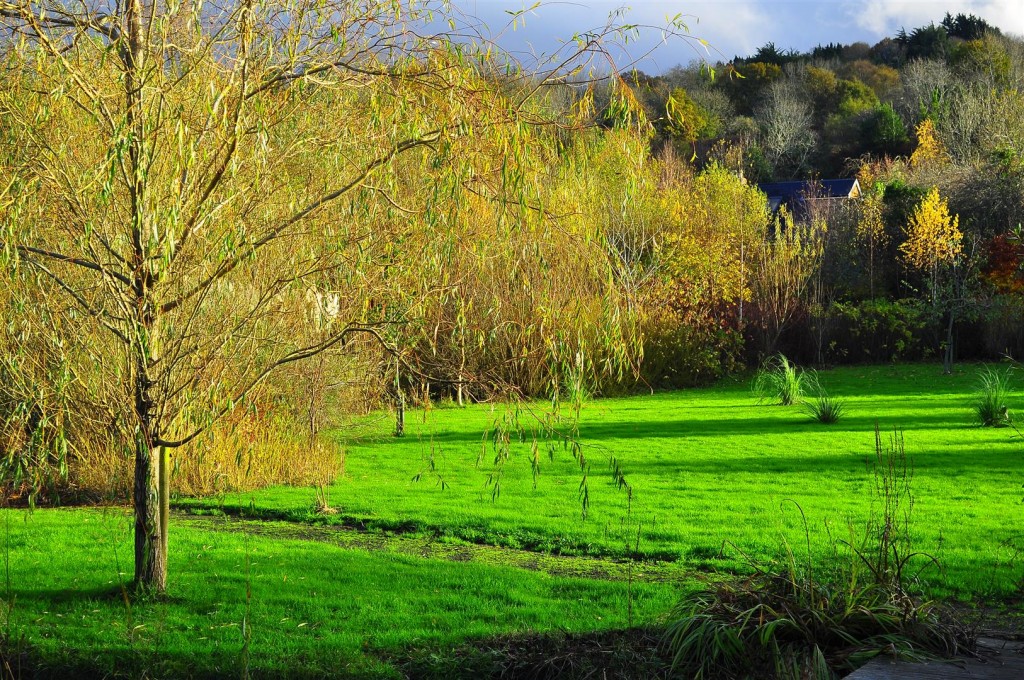
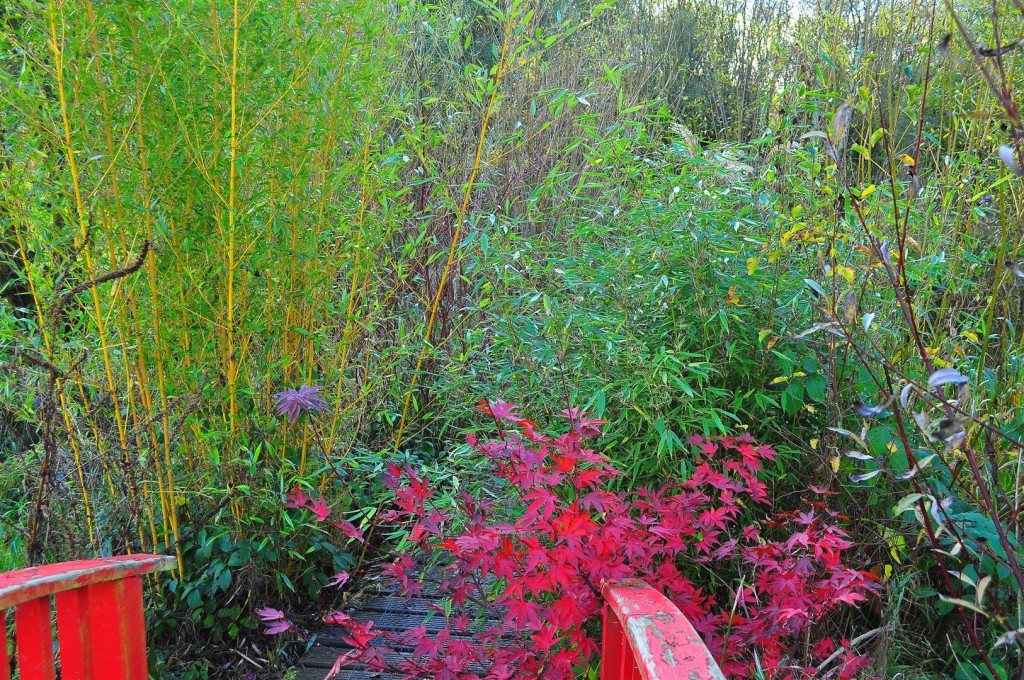
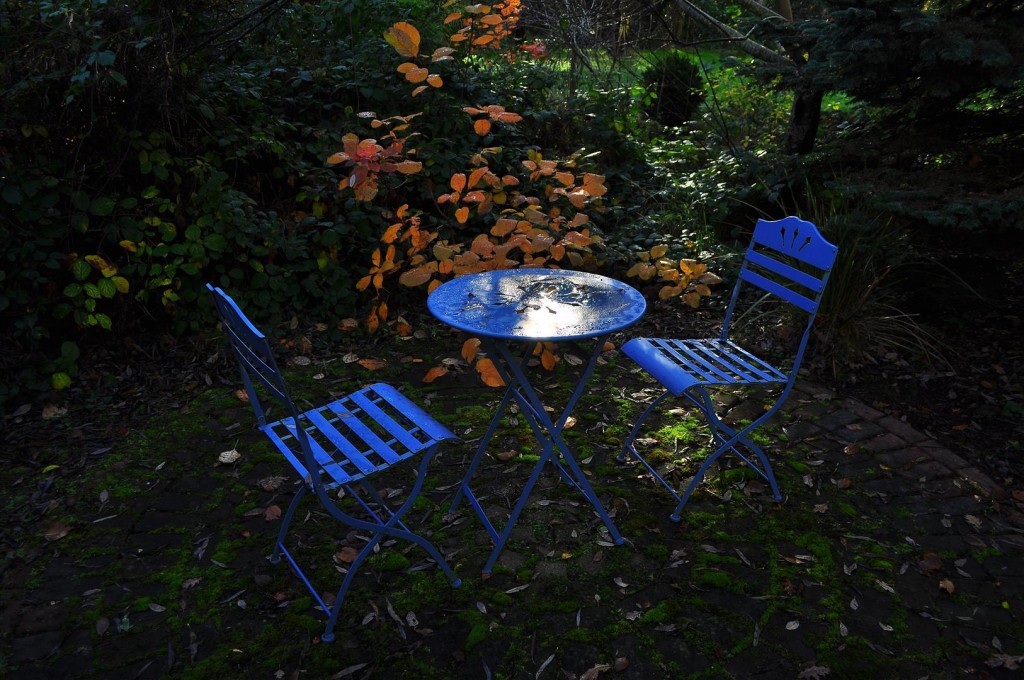

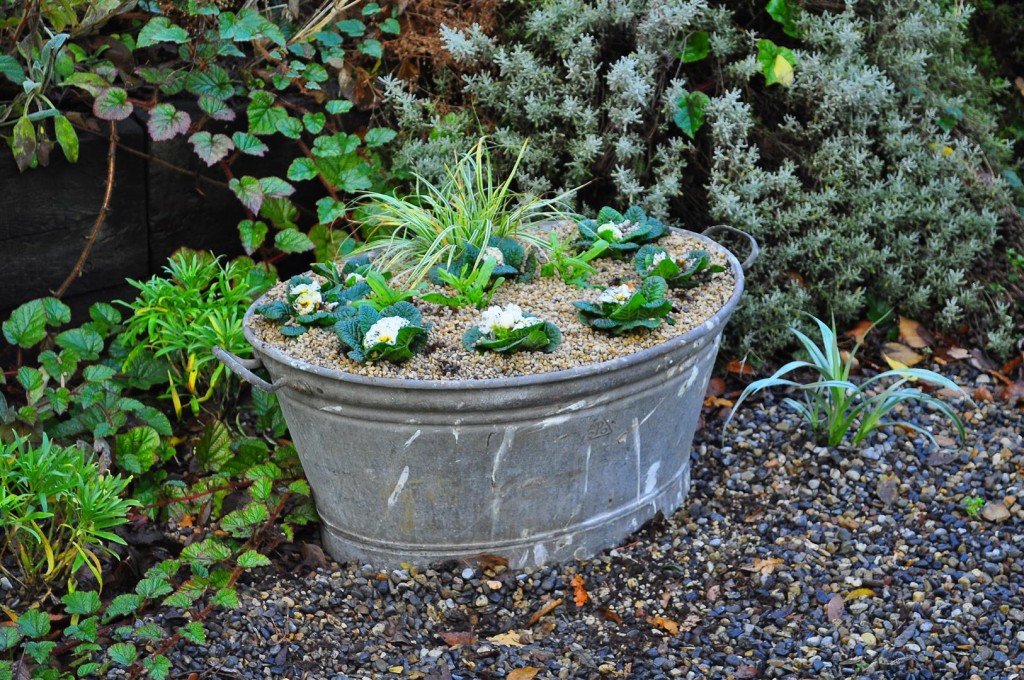
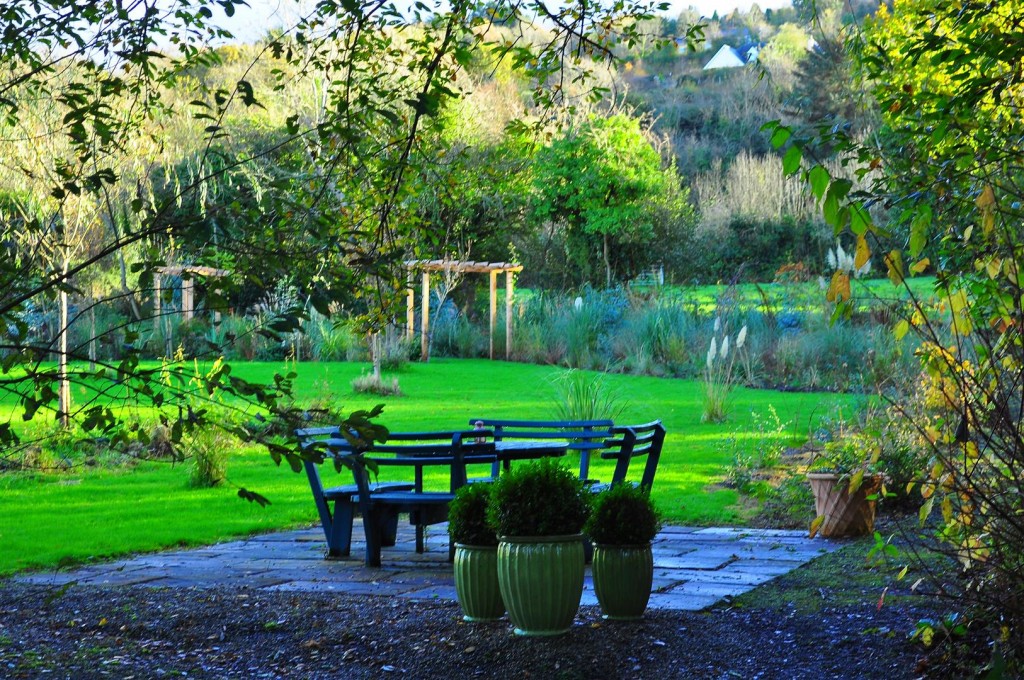
Leave a Reply